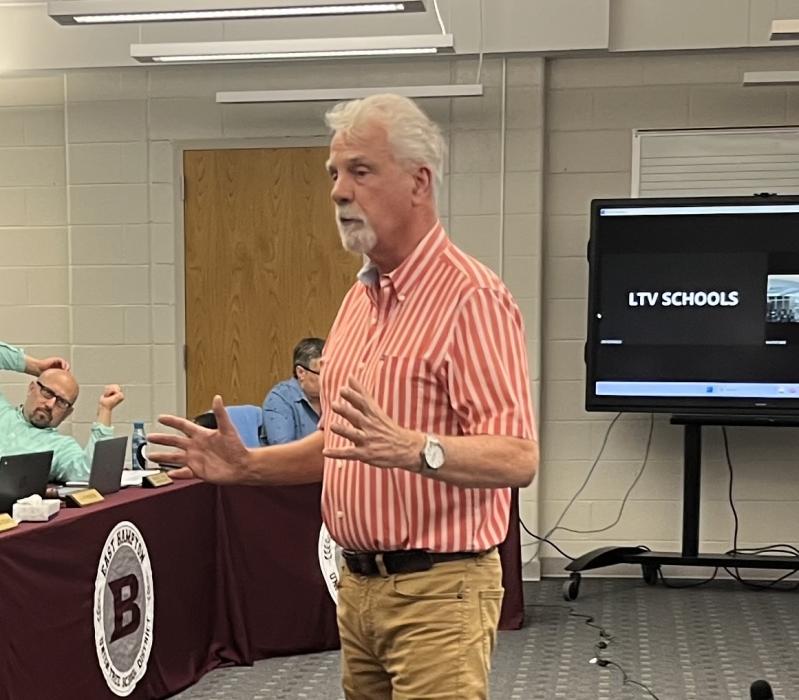As of last winter, there were just two privately owned pieces of vacant land in all of East Hampton Town that fell in an affordable housing overlay district. One belongs to the Amagansett Fire Department, which uses the land for training and emergency services and has made it clear it will never sell it. The other lies halfway between East Hampton Village and Amagansett — four scrubby acres off Pantigo Road, the long-ago site of the East Hampton Riding Club and, until 30 years ago, of Stern’s department store.
On and off for years, the town has thought about making an offer for that land, but the asking price was high. By last December the owner, a San Franciscan, was proposing to subdivide the property for three large houses.
Kirby Marcantonio of East Hampton was watching on LTV as the planning board discussed that application. The next day, he “read the file and found the owner,” he told the board on June 26, six months later. Together, he said, they’d struck a quick deal: Pay $5 million, ask for no conditions whatsoever, and close in 30 days. It was done.
Addressing the Amagansett Citizens Advisory Committee on Monday night, Mr. Marcantonio, who has a group of investors behind him, described the “townhouses” that they hope to build there as “workforce housing, a subset of affordable housing.” The construction of 32 two and three-bedroom units, or 48 if the town amends the code to increase density, would be underwritten by the investors, he said, and sold to local employers, who would then rent the units to their year-round employees, perhaps making occupancy a part of their compensation.
Unlike regular affordable housing, there would be no financial involvement from any federal, state, or town agency, and no municipal oversight. This means that no outside agency — federal, state, or town — could direct that tenancy be open to everyone, regardless of where they live, as is now mandated by federal law when public money is used to create affordable housing.
“We are private,” Mr. Marcantonio stressed. “The first ones to get in will be essential workers: hospital employees, police.”
What he is proposing, he told the citizens group, makes sense socially, environmentally, and financially. Socially, because it would keep people in their community and help to relieve the widespread staff shortages in almost every local business and service; environmentally, because there would be fewer cars making the daily commute to work from UpIsland; financially, because “you cannot run a community when you take the economic base and move it out.” The only community actually “succeeding” here right now, he said, “is the Latino community, which, because they live here, is propping up small businesses.”
“They’re going to Riverhead to shop,” offered someone in the audience.
“Not for groceries,” Mr. Marcantonio shot back.
Front and center in his sights at the moment is Stony Brook-Southampton Hospital, whose new emergency department building, now being constructed at 400 Pantigo Place, is less than half a mile from the proposed work force housing complex. The hospital has had trouble keeping employees on “the far East End,” said Mr. Marcantonio, and is beginning to fear there may be too few people to staff the new facility when it opens. They have approached him, he said, about reserving 30 work force housing units for doctors, nurses, and other employees.
There has been interest also, he said, from the police, and from others including but not limited to schools, for teachers and district employees; from motels, from Nick & Toni’s and several year-round Montauk restaurants, and from the Maidstone Club, all seeking reasonably priced quarters for their staff.
Mr. Marcantonio and his group face one big stumbling block: Under current town code, there can be only eight units of affordable housing per acre. The rules, he told the citizens group, date back to 1984, when each unit had to have its own cesspool. Now, with vastly improved sewage and sanitary systems, the town board seems likely to raise the allowable number of units per acre to 12, at least for senior housing. (The board is to consider that possibility today, in fact.)
If the 12-units-per-acre amendment is approved and extended to work force housing, said Mr. Marcantonio, they could build 48 units rather than just 32, and “we should be able to sell a three-bedroom for $750,000,” less than what it would cost with fewer units. Actually, he said, should the town not agree to the higher density, all four townhouses would have to have three bedrooms only, and no twos, to keep up with rising expenses.
At a June 26 planning board meeting, four of the five board members seemed to look favorably upon the work force housing plan, though they have since told the town board only that “this board prefers this proposal” to the three-house subdivision that came before it in December. That application, incidentally, has since been passed on to Mr. Marcantonio’s group, and remains active.
The Amagansett Citizens Advisory Committee made short work of what little remained on Monday night’s agenda after Mr. Marcantonio left the room. New lighting in the central business district, a project begun several years ago with much enthusiasm but little action, now appears to be a real prospect. The district itself, John Broderick told the committee, has been foreshortened by a third, now ending at Meeting House Lane rather than east of Atlantic Avenue.
Finally, Councilman Tom Flight, the town board’s liaison to the committee, bemoaned the continuing state of the Cranberry Hole bridge, which has been closed to vehicle traffic for over a year. The bridge closure makes the frequent tie-ups at the Abram’s Landing Road-Old Stone Highway railroad intersection even worse, the committee agreed, pushing westbound traffic at times “all the way back to Devon and Side Hill Road.”
The bridge has been closed too long, Mr. Flight said. He promised to write to Albany requesting action, and urged residents to do the same.
This story has been updated since it was first published to remove reference to the East Hampton Housing Authority, which has no involvement with this affordable housing project.




